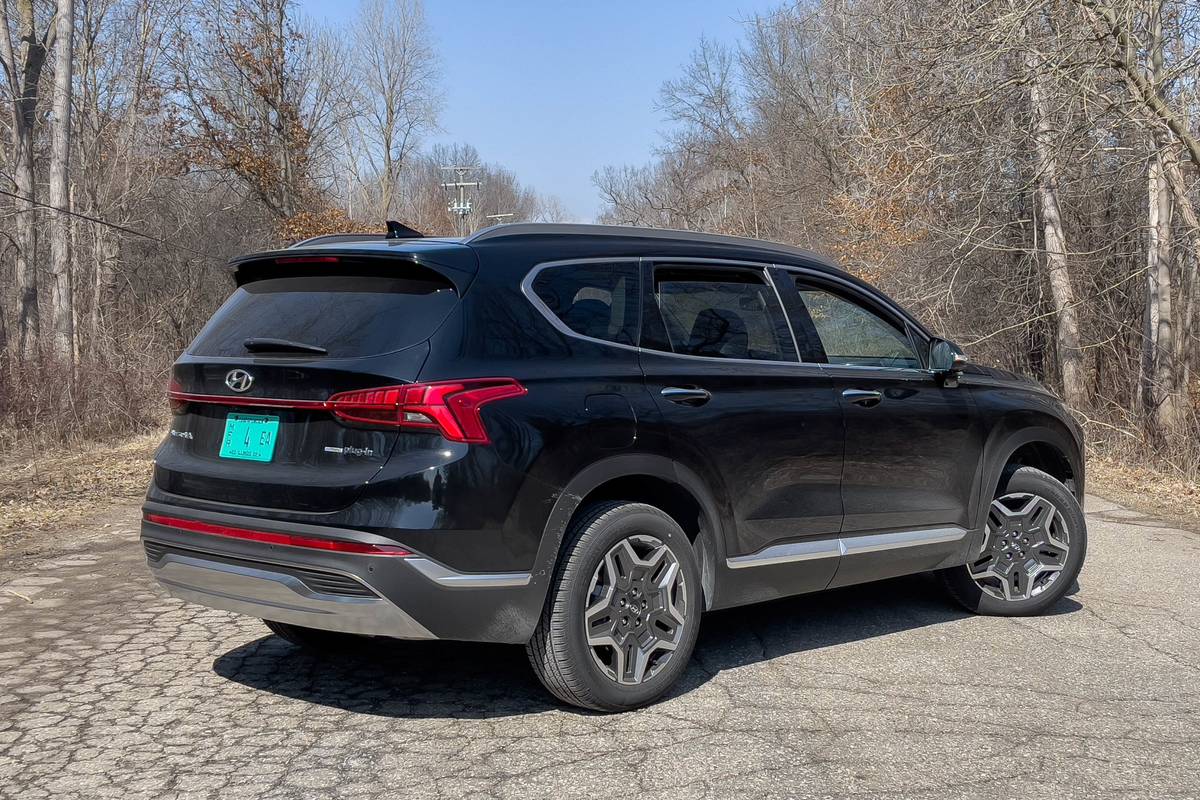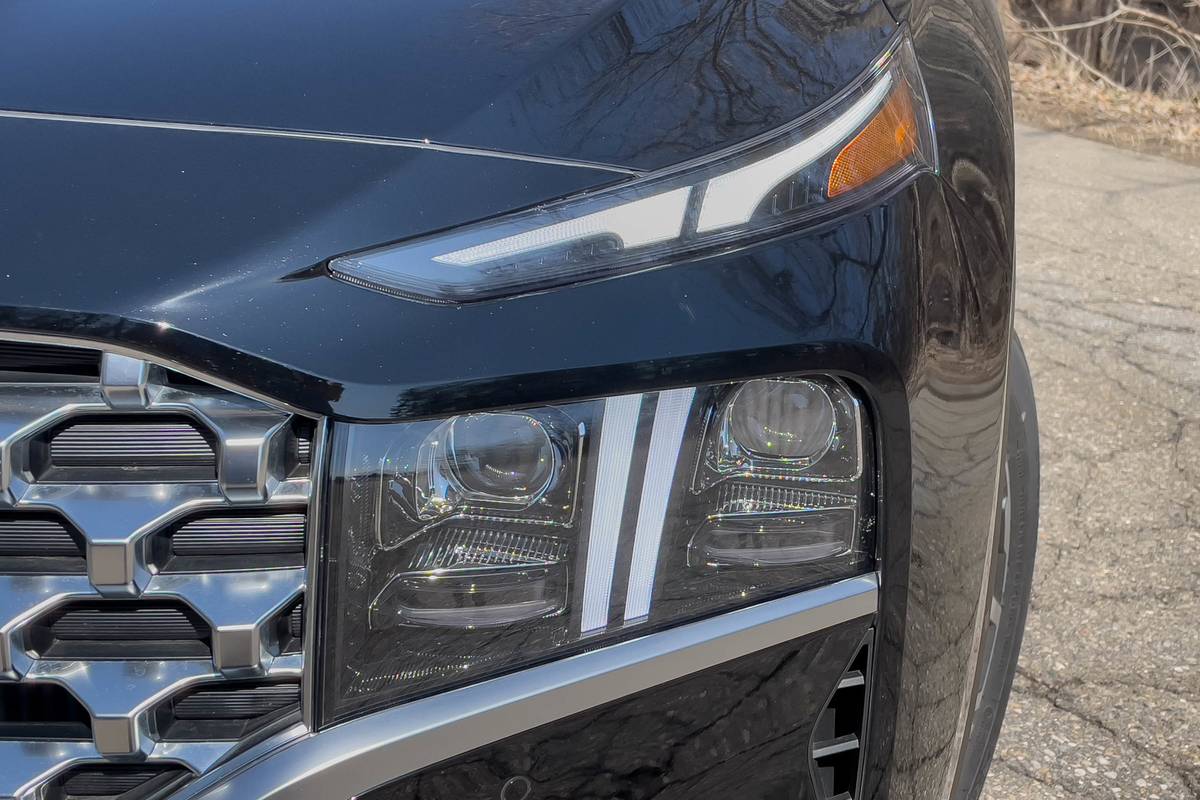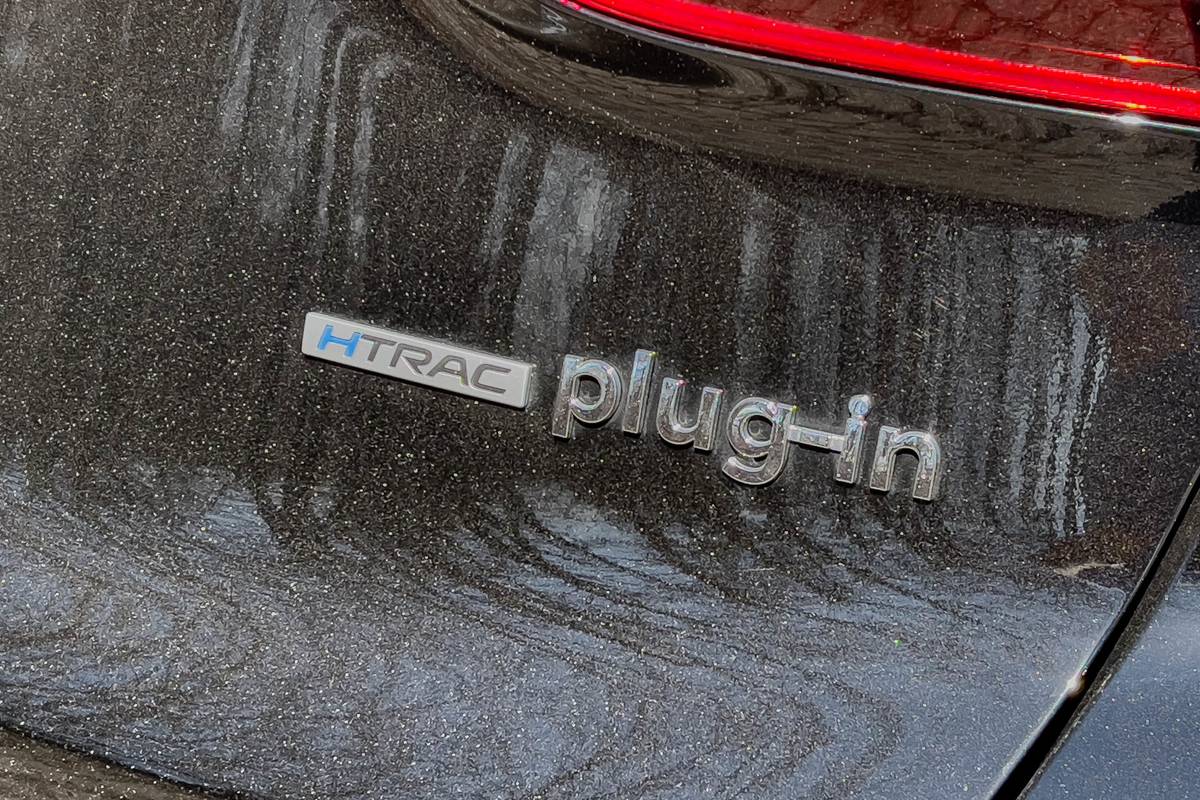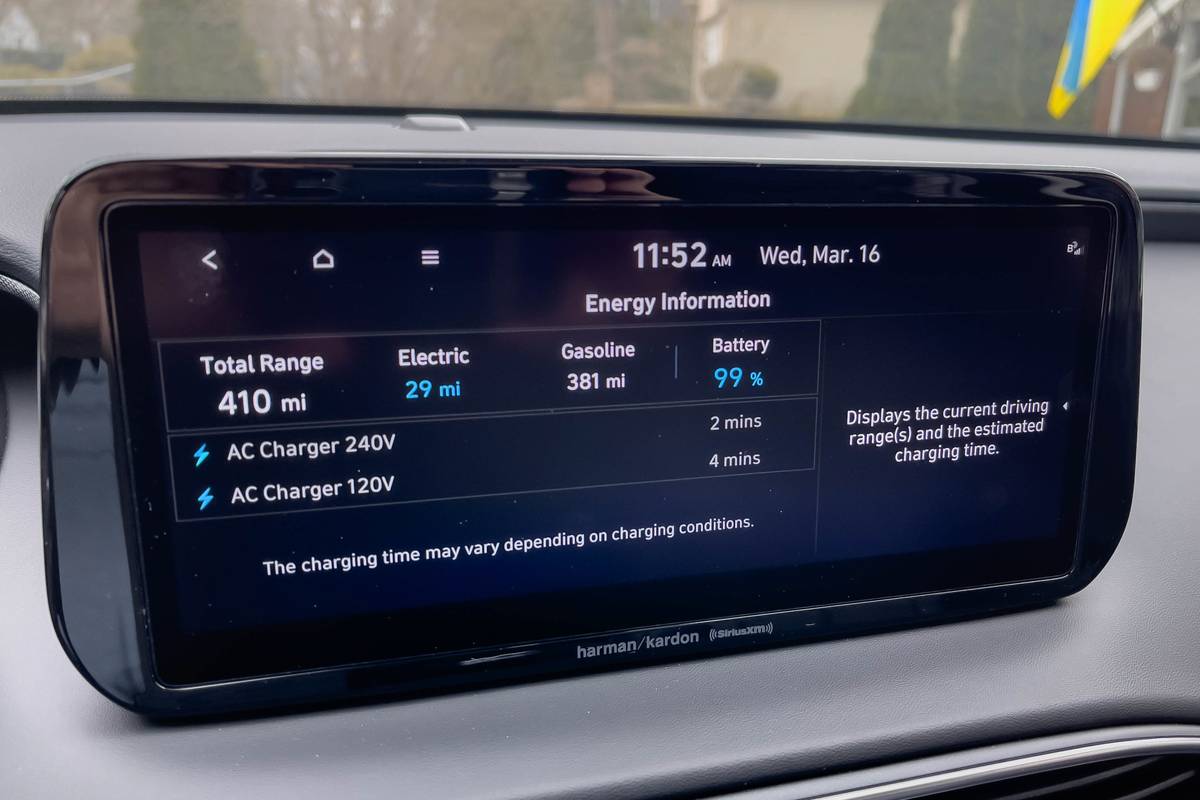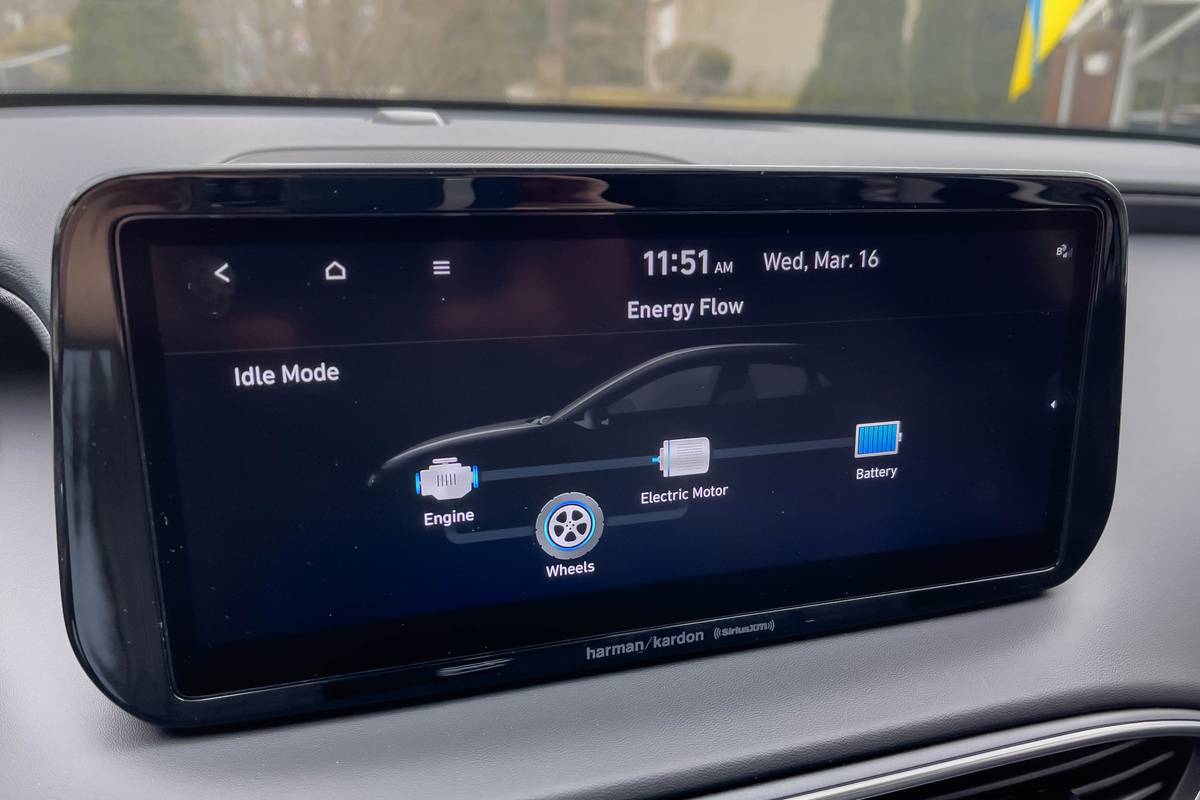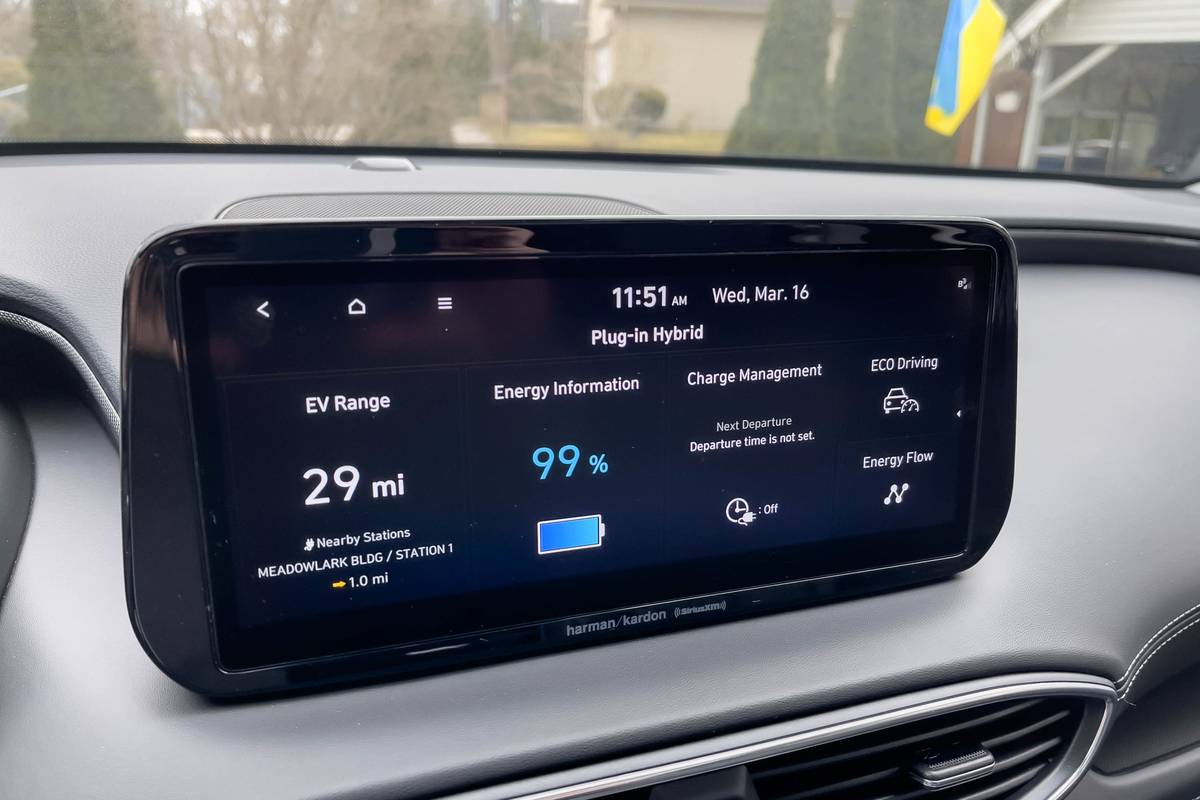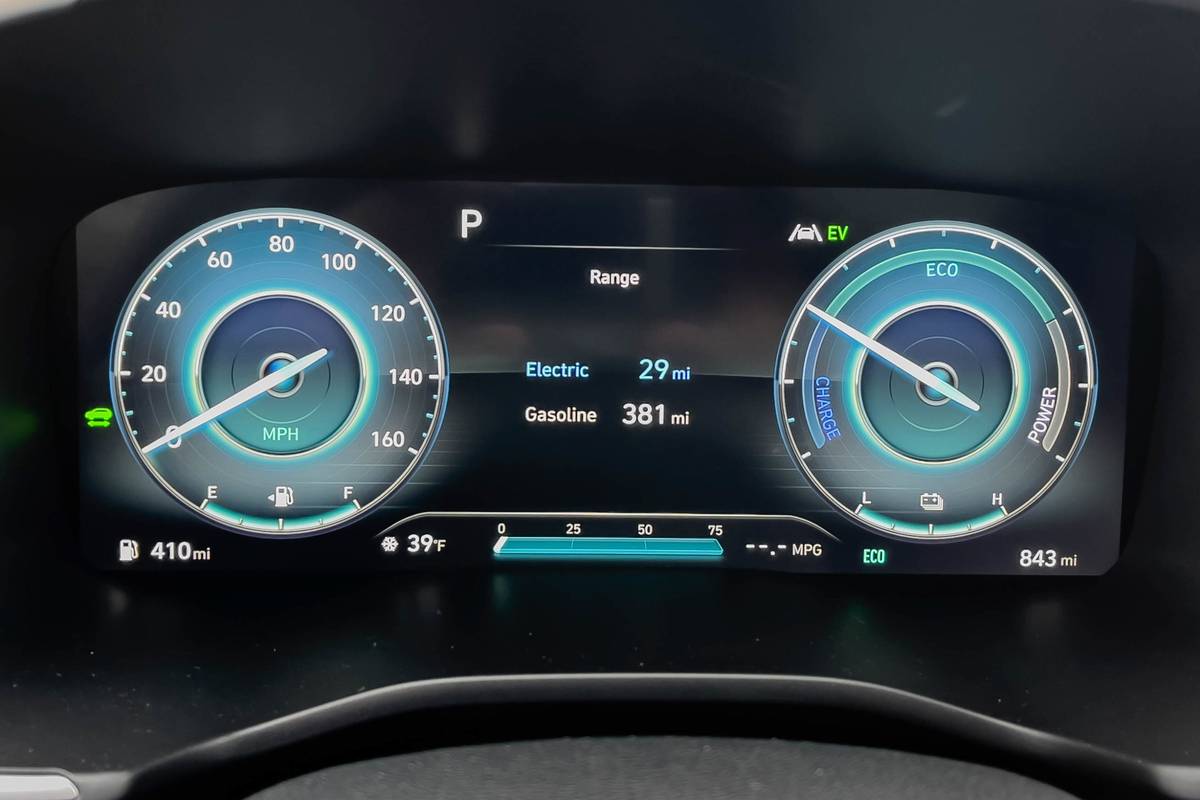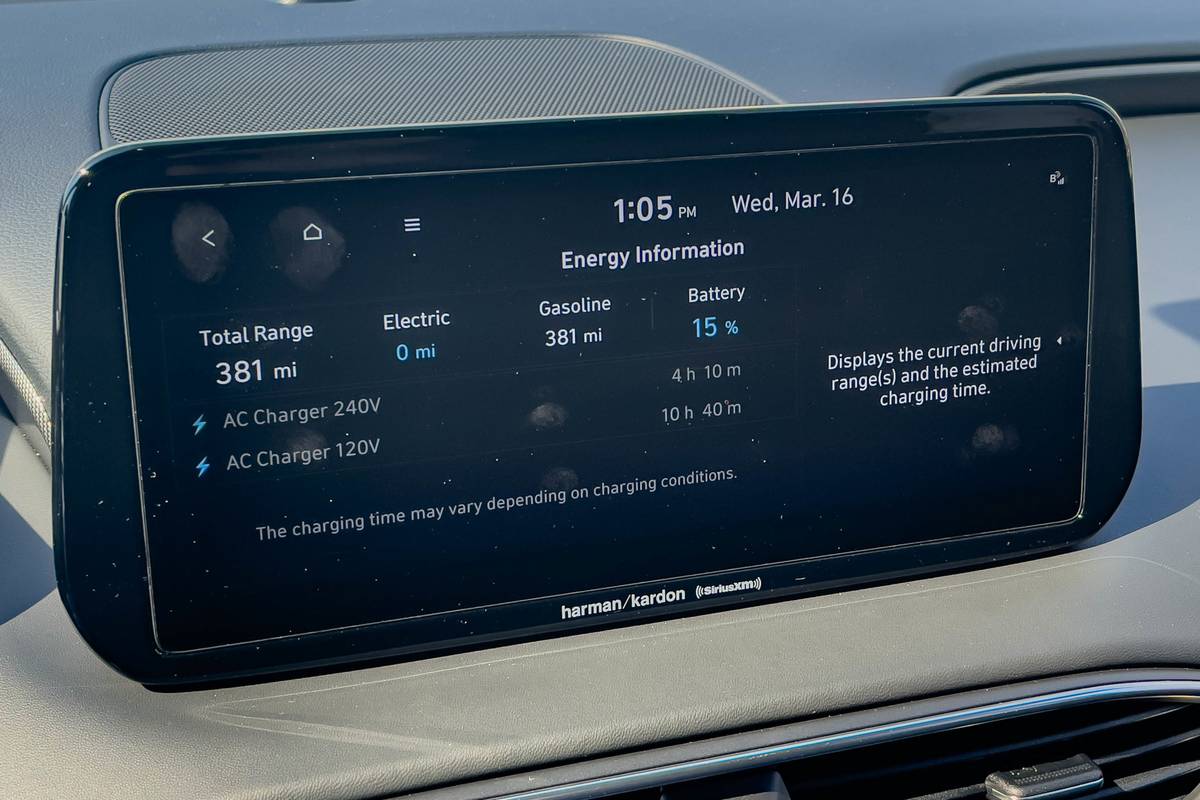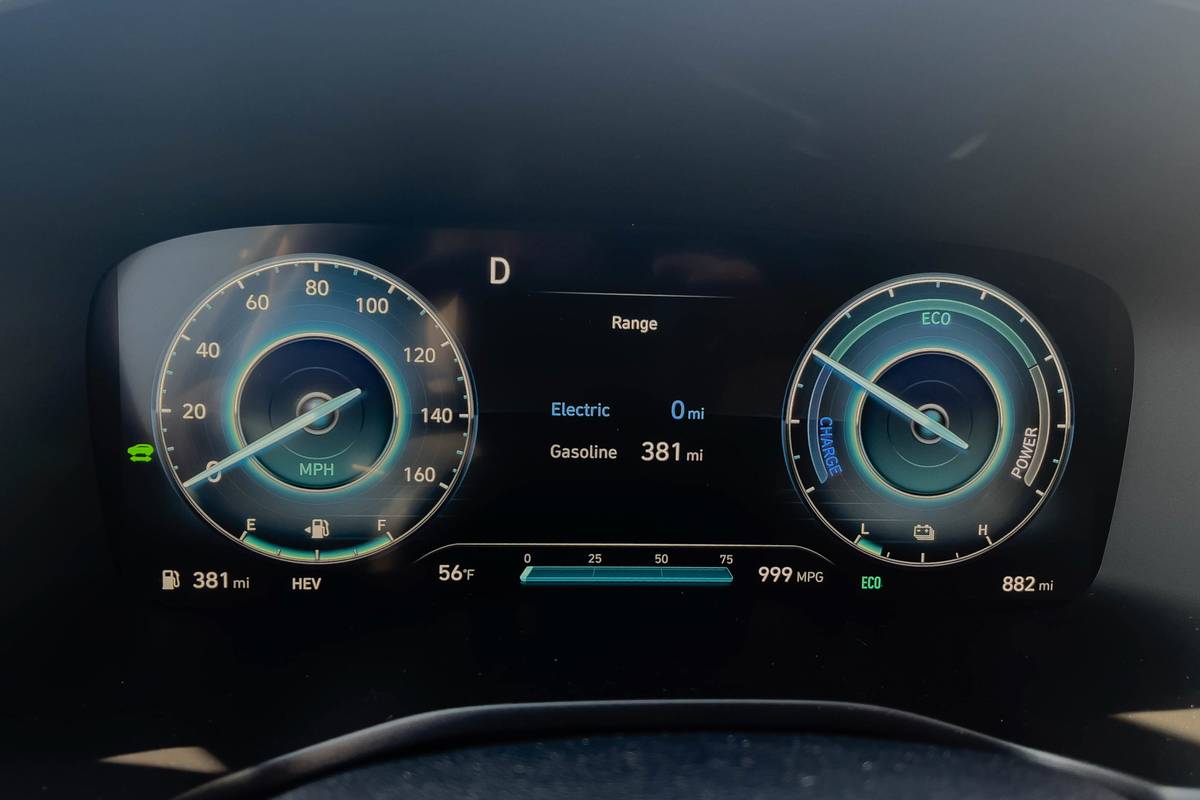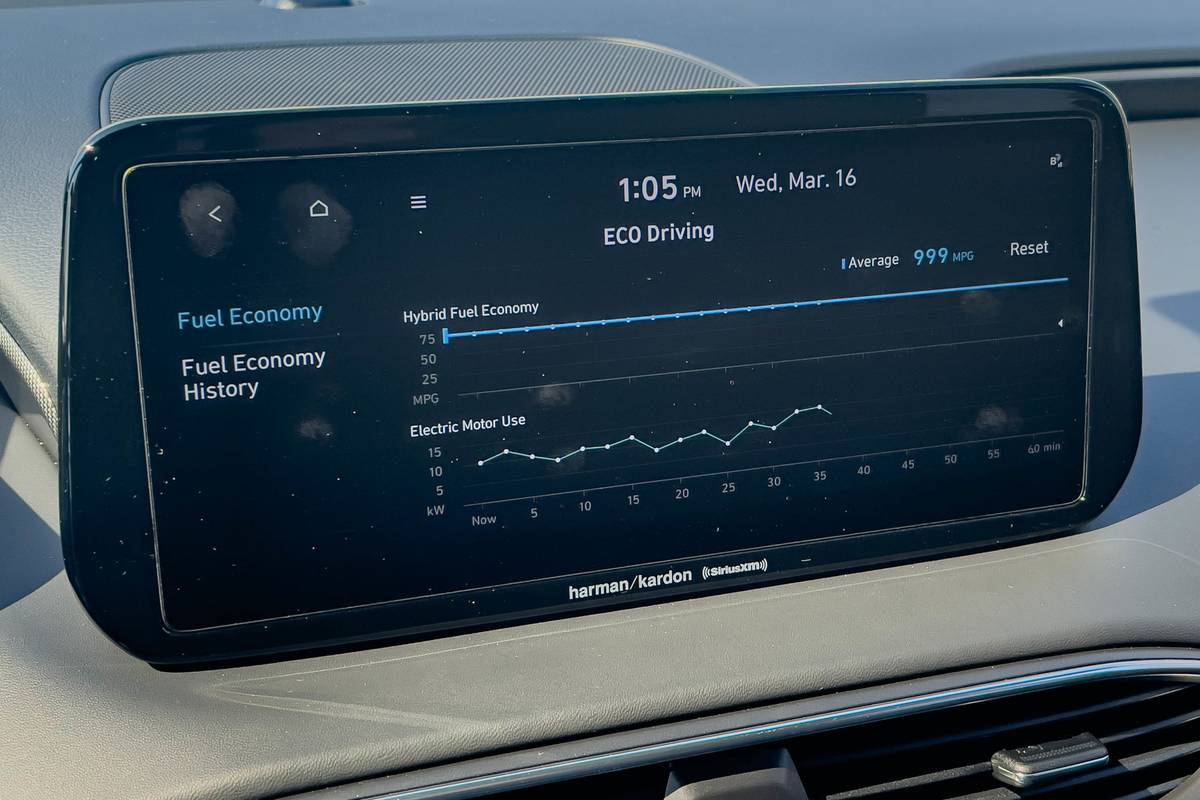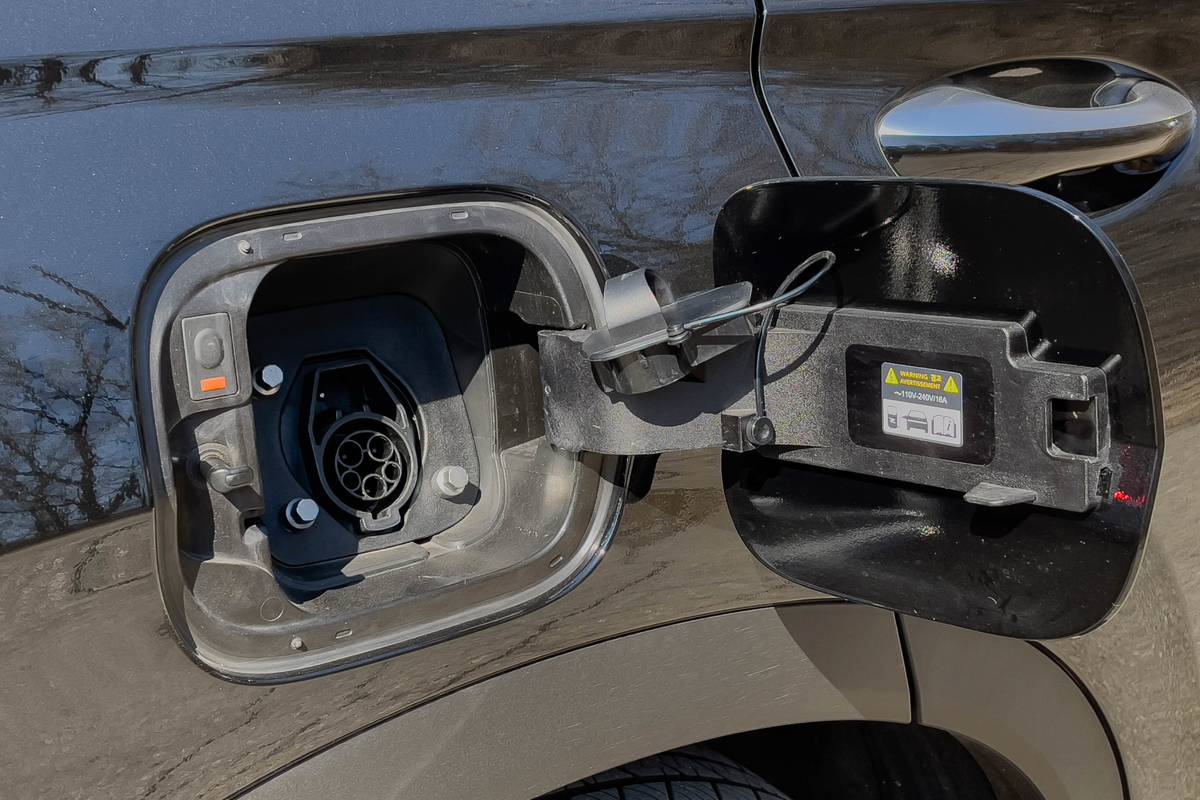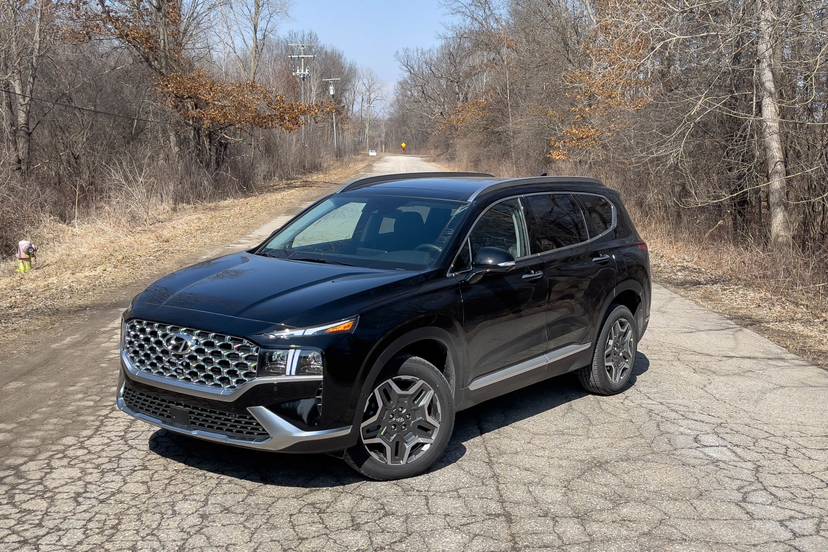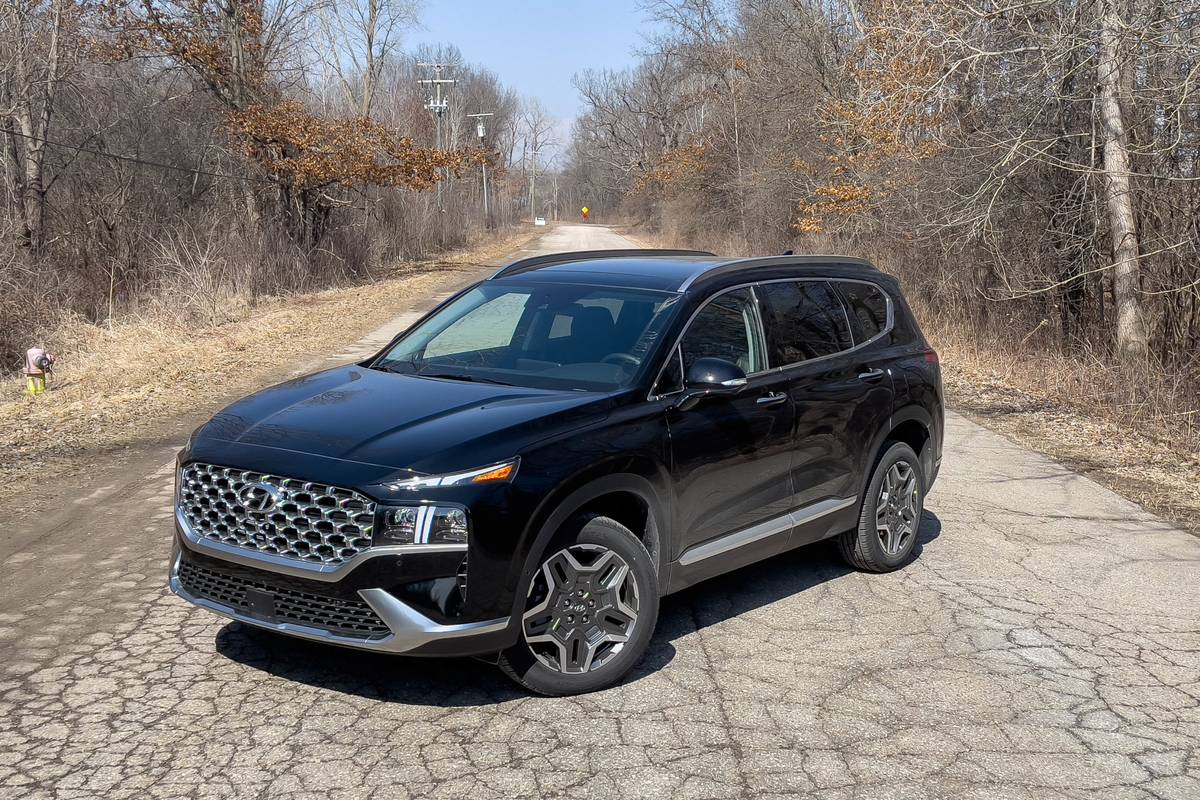
It’s no secret that seemingly every new Hyundai seems to be a smash hit, coming in a little bit better than the last one. The company’s mid-size family SUV, the Santa Fe, is no exception; the latest version offers something for seemingly every buyer. That includes a plug-in hybrid version, combining a gas-electric hybrid powertrain with a slightly larger battery and the ability to drive gas-free for a certain distance before the on-board engine kicks on to extend your driving range.
As is the tradition when I get some time in a PHEV, I like to find out just how far it can go on its electric battery alone before that gas engine pops on. So on a nicely sunny early spring day here in Southeast Michigan, with a fresh Santa Fe fully charged, fully fueled and ready to go, that’s exactly what I did.
Related: Is the 2021 Hyundai Santa Fe Hybrid a Good SUV? 5 Pros and 5 Cons
The Ride
The vehicle in question is a 2022 Hyundai Santa Fe Plug-in Hybrid Limited, sticker price of $46,780 (including delivery fee). The Santa Fe saw its last major facelift for the 2021 model year, so the thing is still quite fresh in terms of styling and equipment. There are regular mild- and plug-in hybrid versions, with the plug-in getting a good-sized 13.8-kilowatt-hour lithium-ion battery that the EPA says is good for an electric-only range of 30 miles before the engine kicks on. At that point, the Santa Fe PHEV is rated at 33 mpg combined, and 76 mpg-equivalent, allowing a theoretical total range of 440 miles before refueling is needed.
The SUV combines a small, turbocharged 1.6-liter four-cylinder gas engine making 178 horsepower with a 90-hp permanent-magnet electric motor and an actual geared six-speed automatic transmission (not a continuously variable unit, which is more common for PHEVs). The plug-in variant also includes HTRAC, Hyundai’s all-wheel-drive system, as standard equipment. The powertrain makes a combined 261 hp, according to Hyundai, and while the inclusion of the bigger battery pack does take a small bite out of the interior passenger volume, by Hyundai’s measurements, it doesn’t affect cargo capacity at all.
The Route
There’s a set route that I use to test real-world range for plug-in hybrids, consisting of driving from my house in Ann Arbor, Mich., to one of my favorite barbecue joints in Dearborn, Mich., and back. No expressways are used, but the route is a good mix of stop-and-go urban traffic and higher-speed divided highway thoroughfares. Top speeds never pass 55 mph, and I keep to within 5 mph of the posted speed limits at all times. The climate control is turned off (this is a max range test and doesn’t attempt to replicate EPA testing), tires are inflated to their recommended levels, windows are rolled up, and both battery and fuel tanks are topped off. For the test, the vehicle’s EV mode is selected, provided it has one — most do these days, and in most vehicles, this keeps the vehicle in electric-only operation provided you’re easy on the throttle and not driving aggressively or too rapidly.
The temperature was cool for this test, in the mid-40s Fahrenheit, but dry and sunny. How far would the Santa Fe get before it ran out of juice?
The Results
The official line is that the Santa Fe Plug-in Hybrid can go 30 miles on electricity alone in the EPA’s testing cycle before it needs to use its gas engine. My results saw it go 39 miles on electricity before the little turbo four-banger fired up — and this is without being too light on the throttle and brake, driving well below the speed limit or other antisocial methods that will get you honked at by justifiably irked people behind you. The Santa Fe PHEV behaves quite acceptably in EV mode, with a meter in the gauge cluster to let you know just how much throttle you can give it and still stay within the requirements of EV mode — too much or too quickly, and the digital gauge will peg to the right and the engine will power on, as the SUV thinks you might need some quick speed for whatever reason. But drive it normally, calmly, as if you were receiving instruction from the in-laws in the backseat, and the crossover is happy to just motor around as a comfy commuter burning no gasoline whatsoever.
Recharging a Santa Fe PHEV with a spent battery takes about four hours on a Level 2 240-volt charger, according to the automaker, which is about par for the course; the Santa Fe PHEV has a 3.6-kilowatt onboard charger at 240 volts. There is no DC fast charging offered, but that’s also not uncommon for a PHEV with a battery that’s far smaller than anything a full EV would offer.
The most overwhelming sense when driving this SUV is one of normalcy. The electric motor isn’t powerful, but under most circumstances, it’s more than adequate to get you moving up to the speed of traffic and then keep you there. The six-speed transmission is unusual in that you feel it calmly shifting as you accelerate, but there’s no noise associated with the movement, so it doesn’t feel like other PHEVs that employ a continuously variable automatic and deliver their power in one long, seamless surge; it also doesn’t feel like a gas-engine vehicle that changes pitch when the transmission shifts. The ride is quiet, comfortable and smooth. It handles about as well as any mid-size crossover despite the extra weight of its big battery pack and electric motor, which is noticeable in turns but isn’t a burden.
My only real complaint with the PHEV is that Hyundai continues to place the charge port doors on the rear passenger side of the vehicle. The brand-new all-electric Ioniq 5 has the same issue. I prefer having the charge port door near the front of the vehicle, and preferably on the driver’s side — that side always has to be free given that a driver has to get in and out of the thing. To charge the Santa Fe in my own garage (which is a two-car garage but not overly large), I had to back the Santa Fe up to the garage with the driver’s side too close to the wall to get out, park it, get out, start the thing remotely and use Hyundai’s Smart Park remote-control parking function to back the Santa Fe into my garage with the right-rear charge port door facing the middle of the garage. Only then was I able to plug my home charger into it.
Aside from that design choice, the Santa Fe Plug-In Hybrid is an excellent cruiser that’s able to deliver beyond its ratings for people who want an electric commute but still enjoy the convenience of being able to do long trips without the need to find fast chargers en route. With its spacious, well-designed interior, sharp styling and impressive on-board technology, it’s yet another of Hyundai’s winners.
Related Video:
We cannot generate a video preview.
More From Cars.com:
- 2021 Hyundai Santa Fe Hybrid Review: Efficiency Over Everything
- Hyundai Santa Fe: Which Should You Buy, 2021 or 2022?
- Is the 2021 Hyundai Santa Fe a Good Car? 5 Pros and 4 Cons
- Wireless Apple CarPlay and Android Auto: Where Are They Now?
- Shopping for a 2022 Hyundai Santa Fe Hybrid? Research One, Here
- Find a 2022 Hyundai Santa Fe Hybrid for Sale Near You, Now
Cars.com’s Editorial department is your source for automotive news and reviews. In line with Cars.com’s long-standing ethics policy, editors and reviewers don’t accept gifts or free trips from automakers. The Editorial department is independent of Cars.com’s advertising, sales and sponsored content departments.







